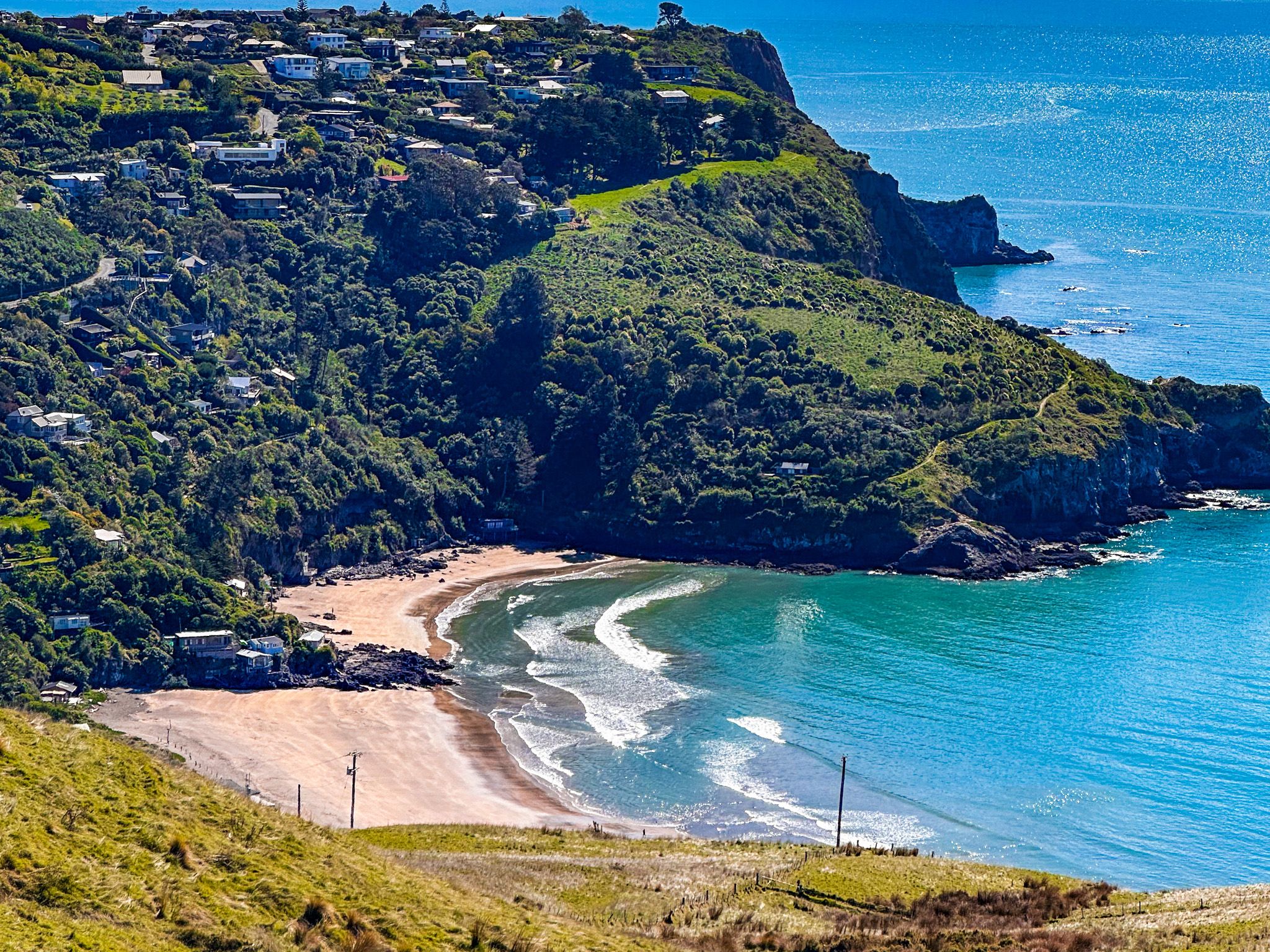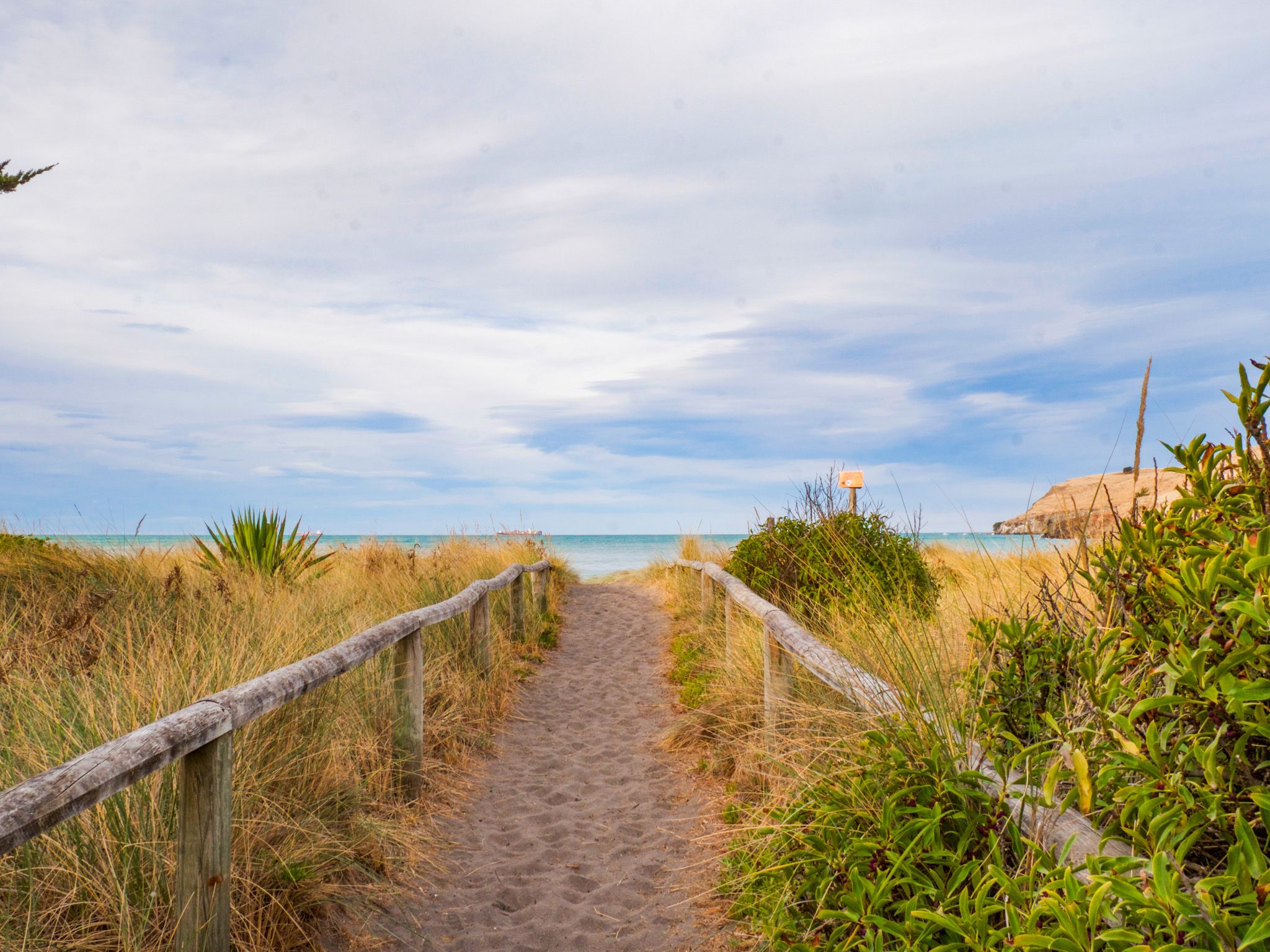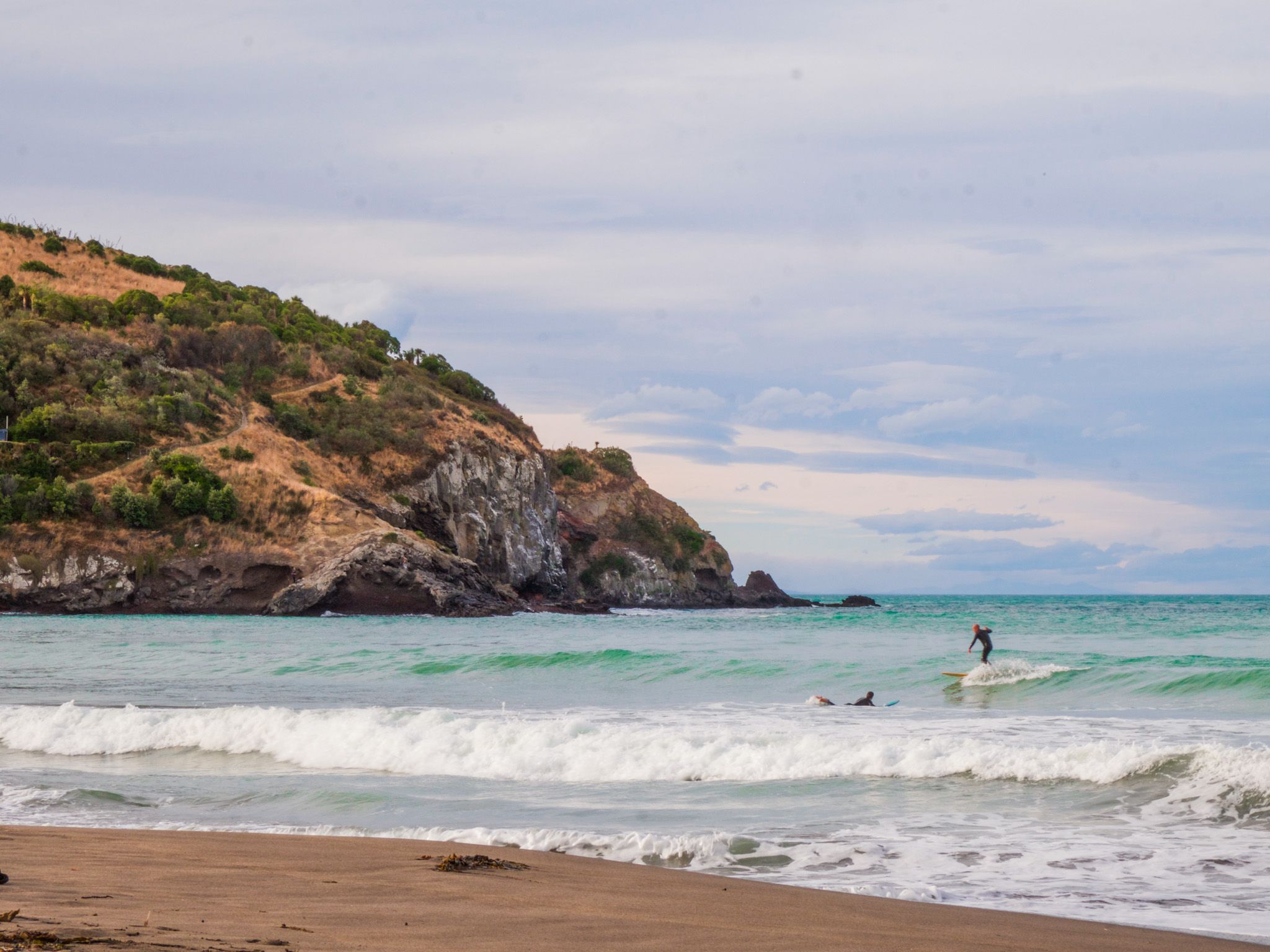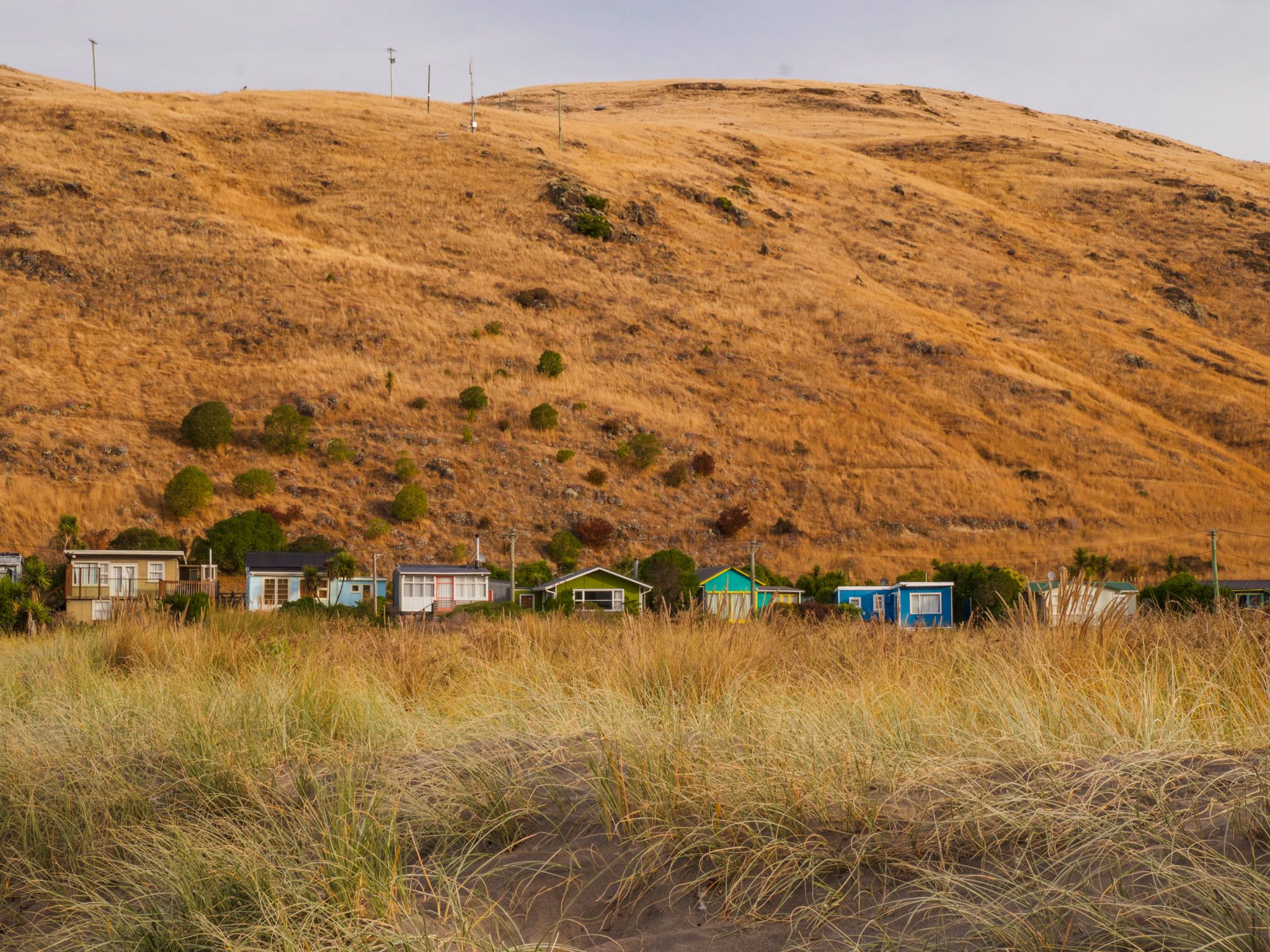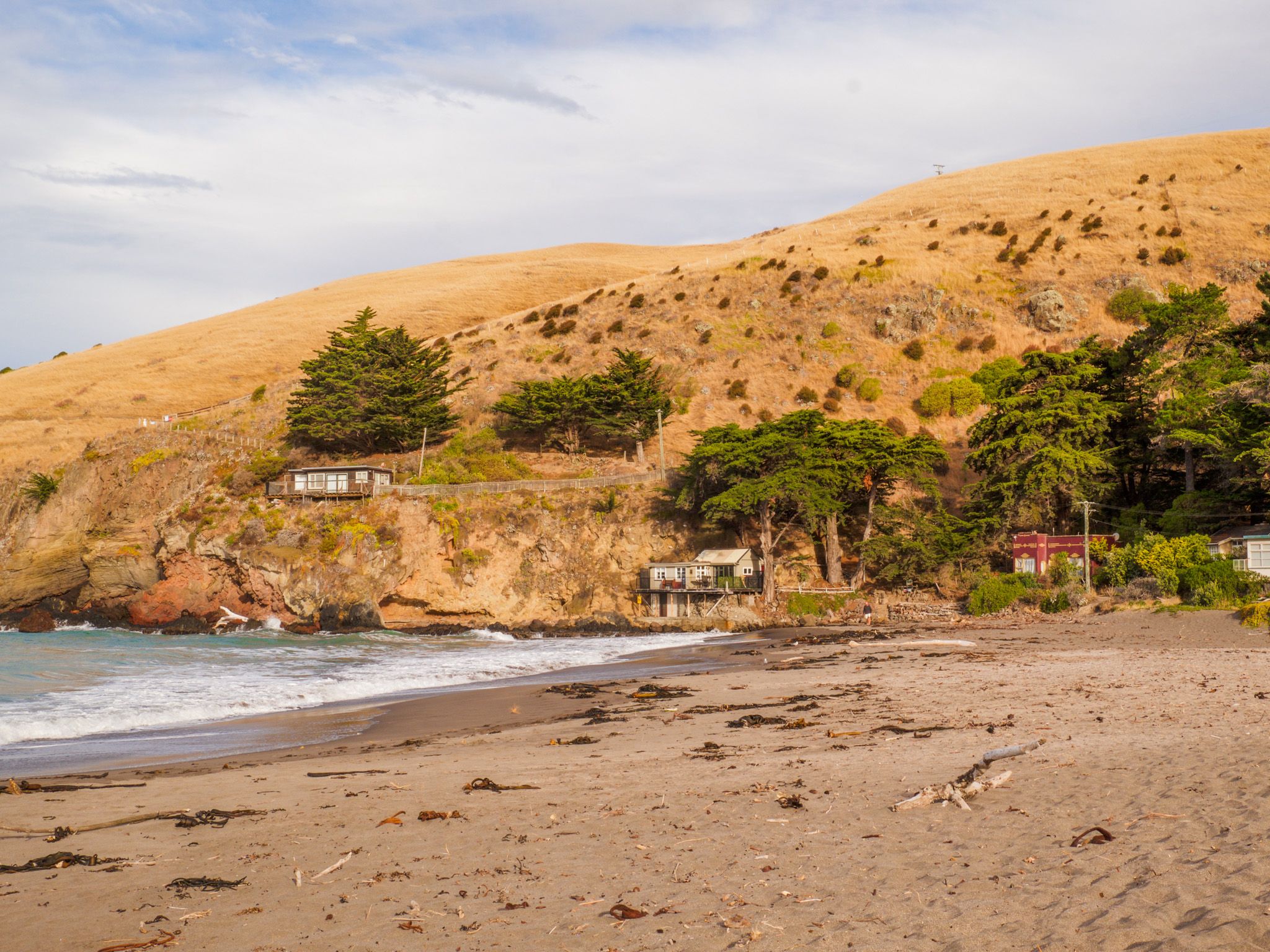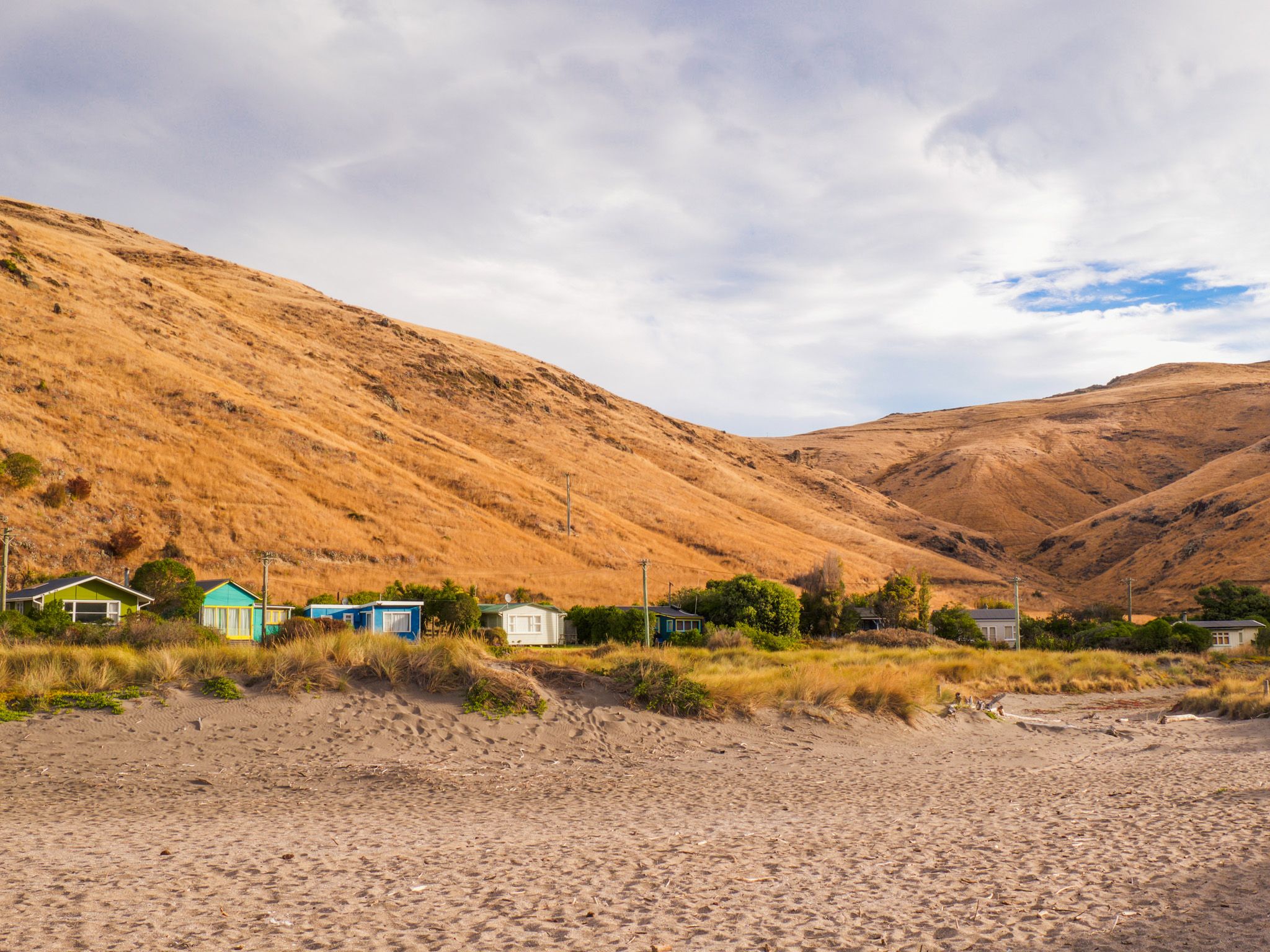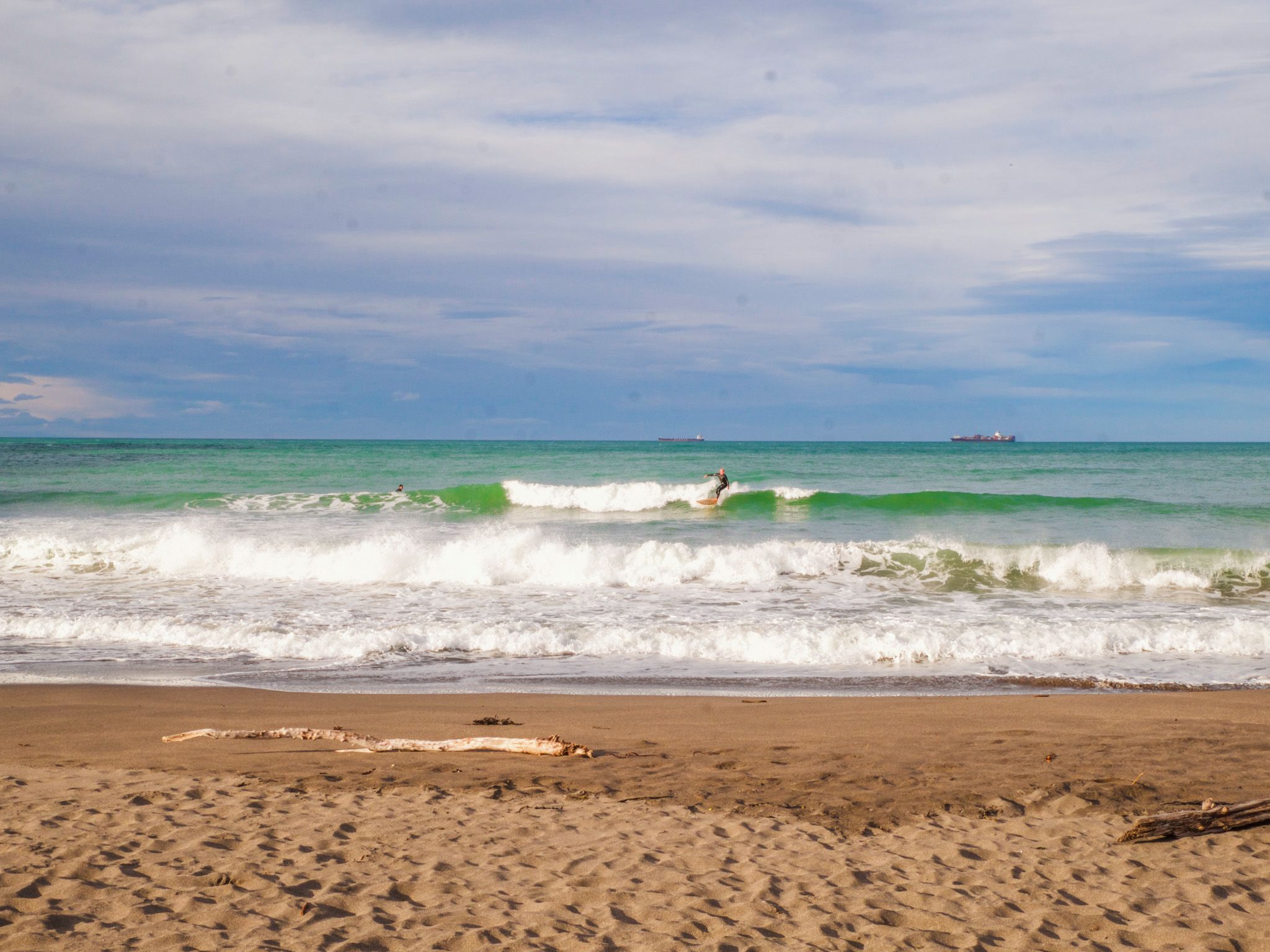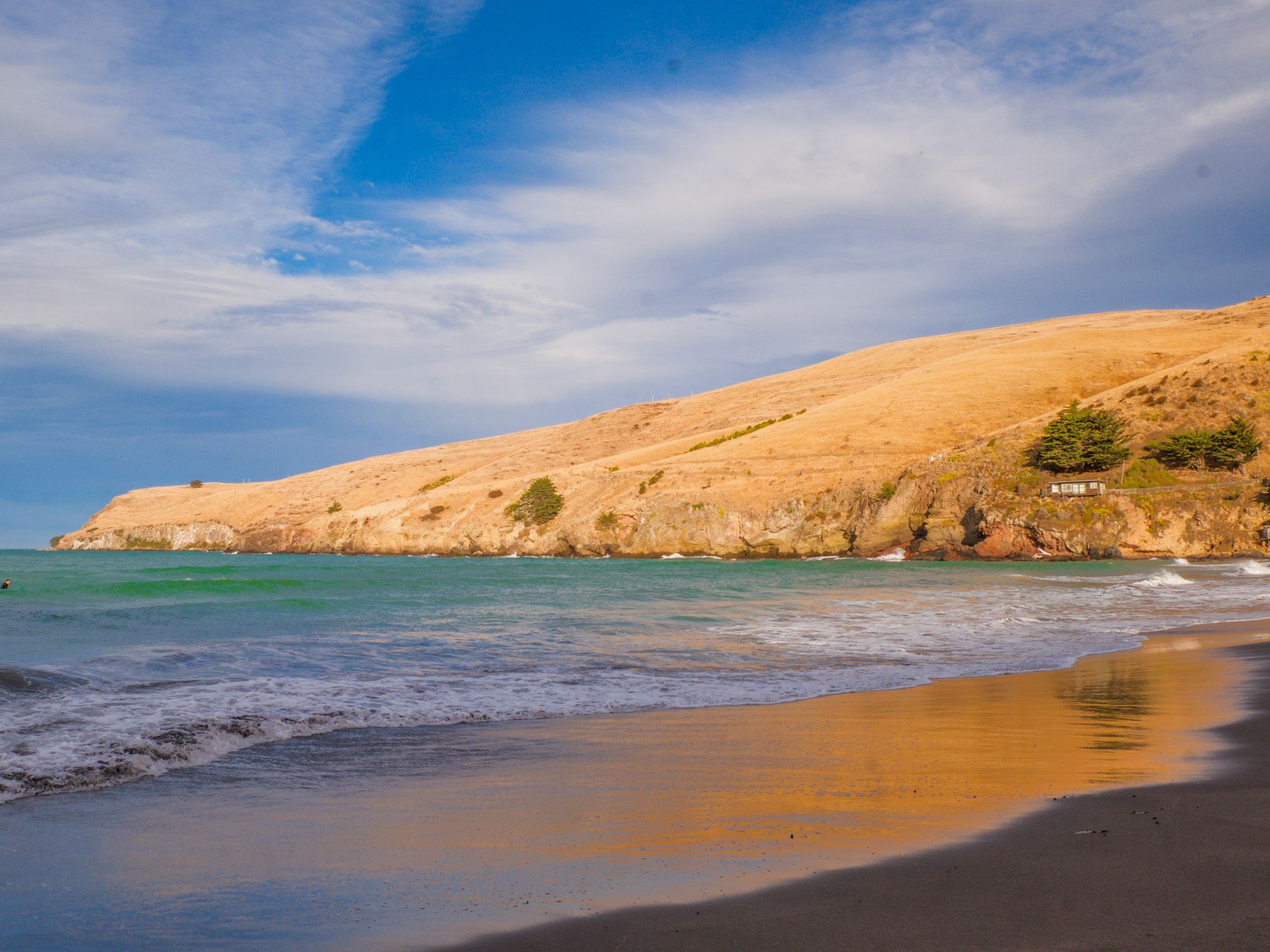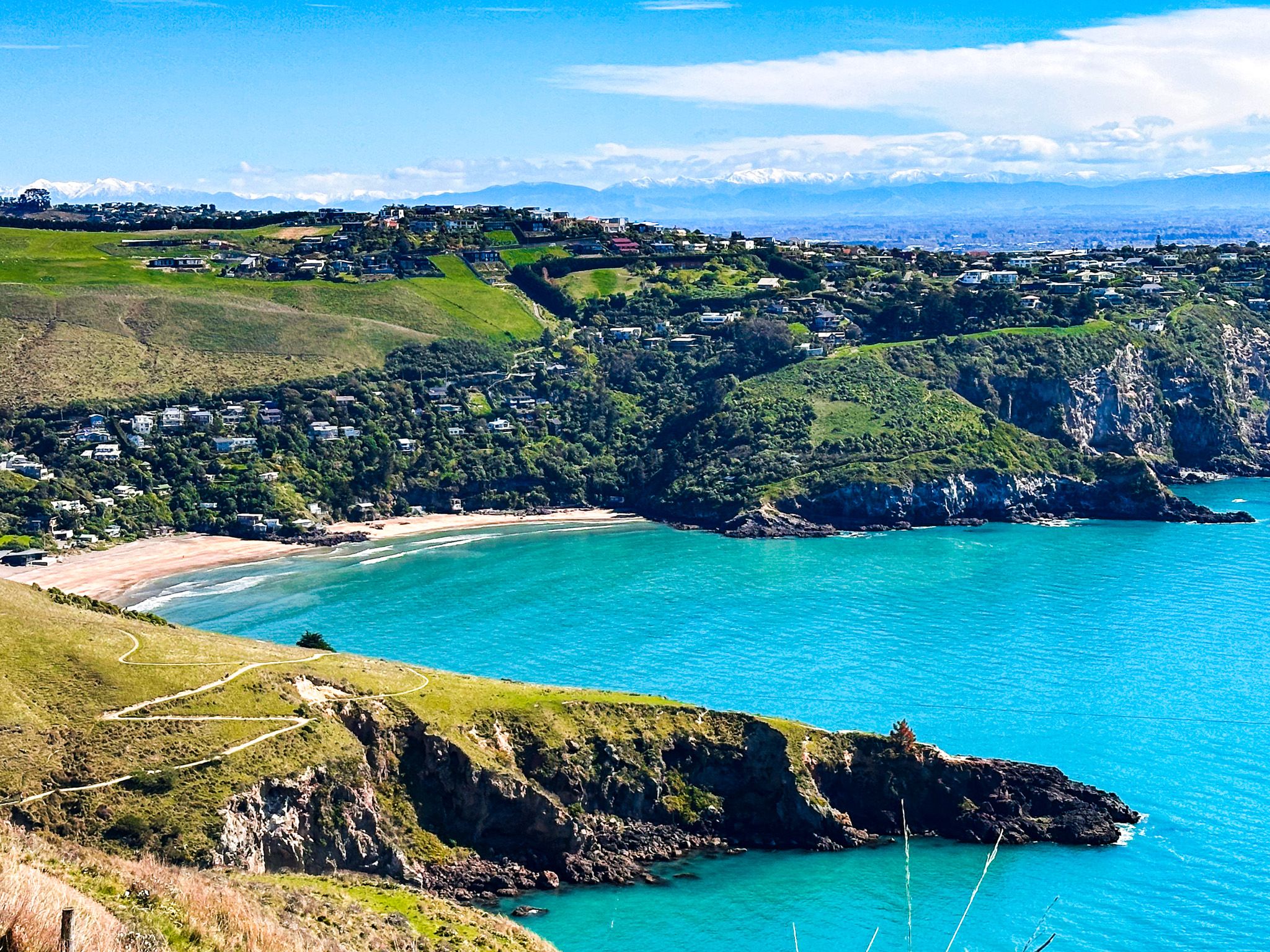Te Onepoto / Taylors Mistake is a seaside bach hamlet with a surf beach on the edge of Christchurch, east of Sumner and Scarborough. Further to the east is Awaroa / Godley Head, on the south side of the Lyttelton Harbour entrance. The hills and cliffs around the beach are part of the north side of the ancient Lyttelton volcano rim surrounding the harbour. The beach is remote but has long been popular with swimmers and surfers. The Surf Life Saving Club dates back to 1916.
Taylors Mistake is a 3.5 km, 20-minute drive from Sumner. Take Hebner Road, which becomes Scarborough Road, to Scarborough on Sumner Head. The road name changes again to Taylors Mistake Road; follow it to the beach. You can also hike from Scarborough Beach to Taylors Mistake on the Scarborough Track, which is connected with the Taylors Mistake Track. This takes around an hour and includes a steep climb up to Sumner Head. The views are fabulous. From Taylors Mistake, you can also take the Pilgrims Way Coastal Track to Awaroa / Godley Head.
The Māori name, Te Onepoto, means little beach, probably in contrast to nearby Sumner and the long beach of Pegasus Bay. The name "Taylor's Mistake" is unclear, as navigation mistakes were common around the many narrow bays of Banks Peninsula and the entrance to Lyttelton Harbour in the mid-1800s. The most likely is that Edward Taylor, the first European to own land in the area, was surveying the coastline and mistook the bay for Pigeon Bay. Pigeon Bay is 15 km to the east on Banks Peninsula. Realising his mistake, he continued to call the area Taylor's Mistake, which stuck and eventually became the official name.
Taylors Mistake is also known for its historic baches. About 45 are on the coastal strip between Moki Point and Boulder Bay, mostly around Taylors Mistake on the oddly named Rotten Row. They were built on the 'Queen's Chain' foreshore between the 1880s and 1930s and were a cheap way for some Christchurch residents to access a beach holiday on public land. The early bach owners were also the instigators of the Surf Life Saving Club. The buildings led to a long-running battle with the city over the right to remain, and eventually, they were given a license to stay until 1986. After this expired and more debate, the licence was extended to around 2054.
Some of the baches are unique cave baches, with Whare Moki being the oldest surviving example in NZ. Most of them are recognised as heritage assets by either Heritage NZ or Christchurch City. You can walk around the coast to the north to Moki Point or take Pilgrims Way Coastal Track east to Boulder Bay to see more of the baches.
